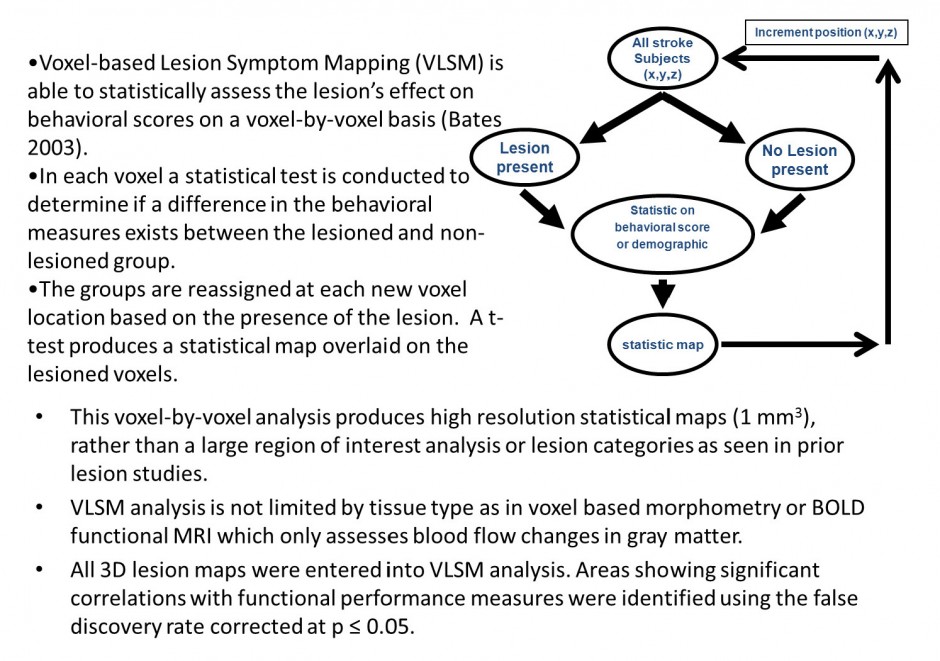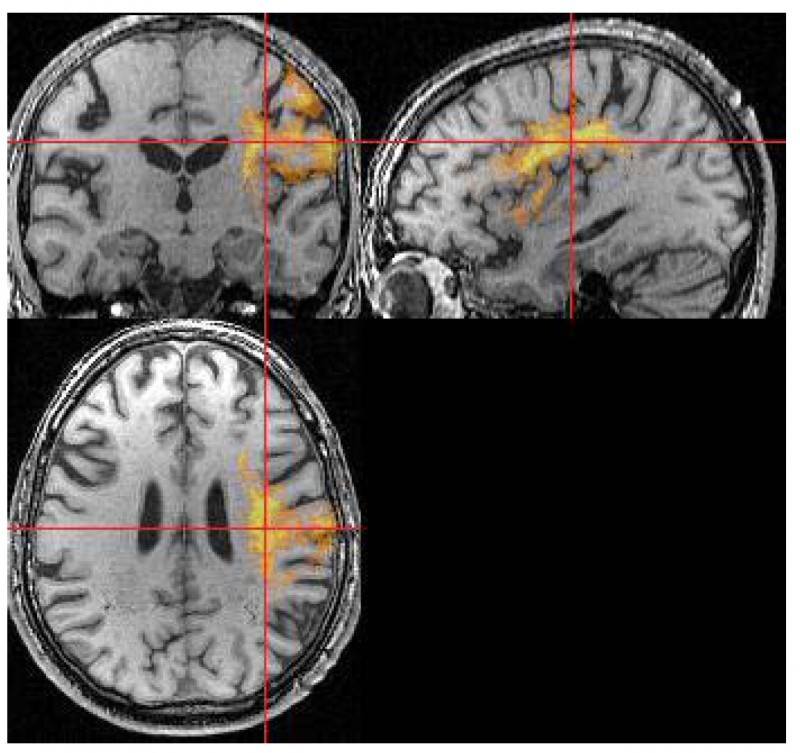- Bates, E., Wilson, S.M., Saygin, A.P., Dick, F., Sereno, M.I., Knight, R.T., Dronkers, N.F. Voxel-based lesion-symptom mapping, Nat. Neurosci. 6, 448–450, 2003.
- Lo R, Gitelman DR, Levy R, Hulvershorn J, Parrish TB. Identification of critical areas for motor function recovery in chronic stroke subjects using voxel-based lesion symptom mapping. Neuroimage 49(1), 9-18, 2010.
Data from all subjects (n=140) with lesions flipped into the left hemisphere. These data are FDR corrected p<0.05.
The area identified is the confluence of the sensory and motor signals that most likely integrate to produce the desired behavior. This region has been identified as a critical component of motor function following stroke. If a subject’s stroke involves these regions they are will have poor motor behavior.


